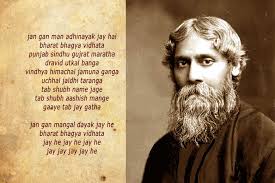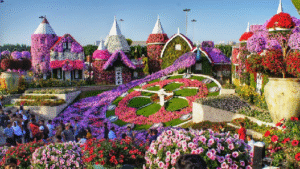- “Jana Gana Mana” was composed by Rabindranath Tagore in 1911.
- Originally written in Bengali, it was later translated into Hindi and other Indian languages.
- The lyrics were crafted to evoke national unity, highlighting the diverse cultural, linguistic, and religious identities of India.
- The music for the anthem was also composed by Tagore himself.
- The song was first sung on 27 December 1911 at the Calcutta session of the Indian National Congress.
- This performance took place in the presence of King George V during the Delhi Durbar, which marked the coronation of King George V as the Emperor of India.
- Although sung on this occasion, it was not yet the national anthem. At that point, it was more of a patriotic song symbolizing unity and national pride.
- Following its first performance, the song gained popularity as a patriotic anthem.
- It was formally adopted as India’s national anthem by the Constituent Assembly on 24 January 1950 after India gained independence in 1947.
- The Hindi version of the anthem, based on the original Bengali composition, was adopted.
- The official national anthem consists of the first stanza of the full song, which originally had five stanzas.
- The adoption of “Jana Gana Mana” marked a significant moment in India’s post-independence history, reflecting the unity and diversity of the newly independent nation.
- The anthem’s lyrics describe the spiritual and geographical unity of India.
- The first line, “Jana Gana Mana Adhinayaka Jaya He Bharat Bhagya Vidhata”, translates to “Thou art the ruler of the minds of all people, Dispenser of India’s destiny.”
- The song emphasizes the idea of unity in diversity and expresses reverence for the country’s land, people, and history.
- “Jana Gana Mana”, composed by Rabindranath Tagore, was first sung on 27 December 1911 at the Indian National Congress session in Calcutta.
- It was officially adopted as the national anthem of India on 24 January 1950 by the Constituent Assembly in its Hindi version.
- The anthem reflects India’s unity, diversity, and spirit, and continues to be a symbol of national pride.







